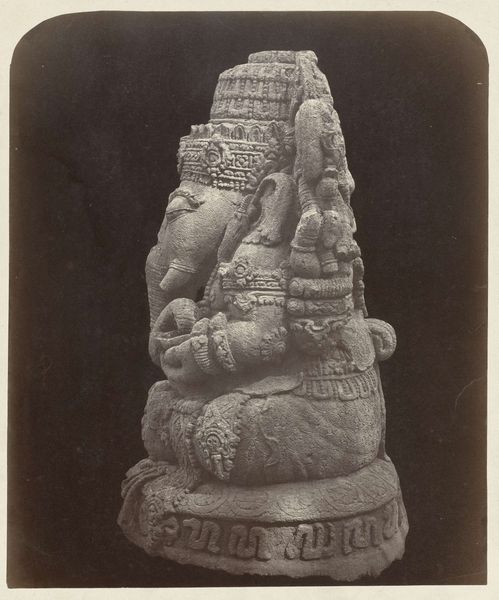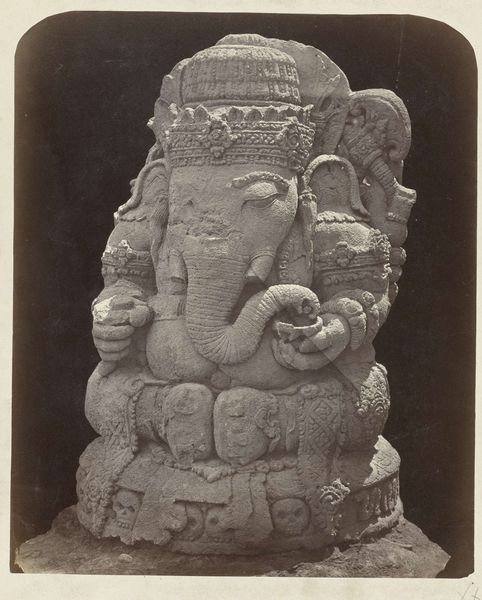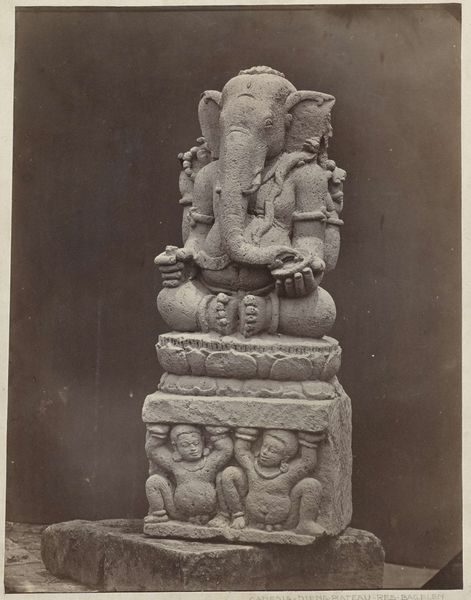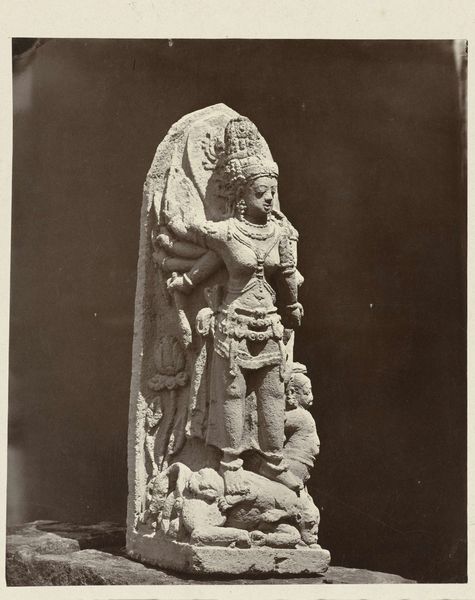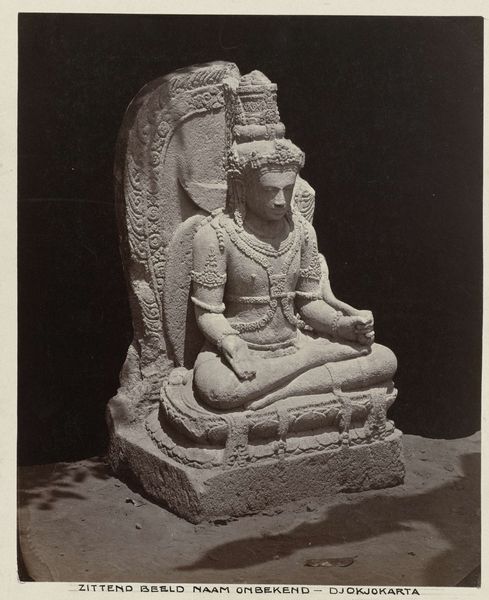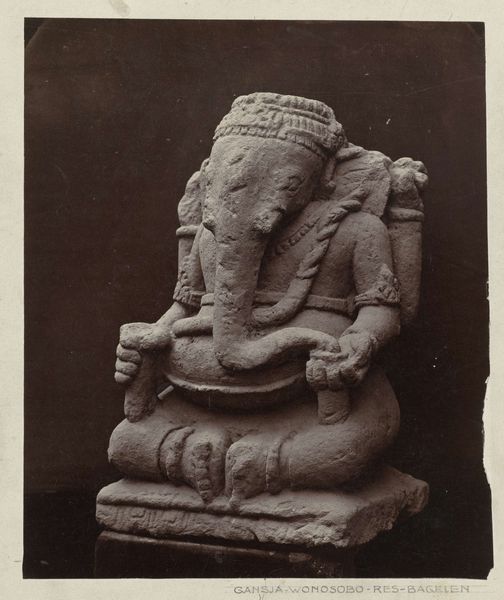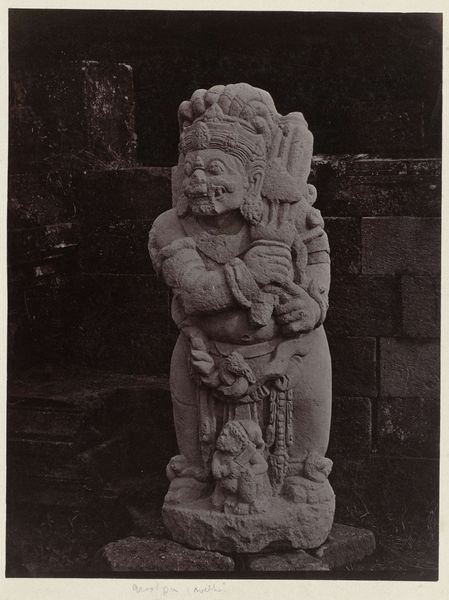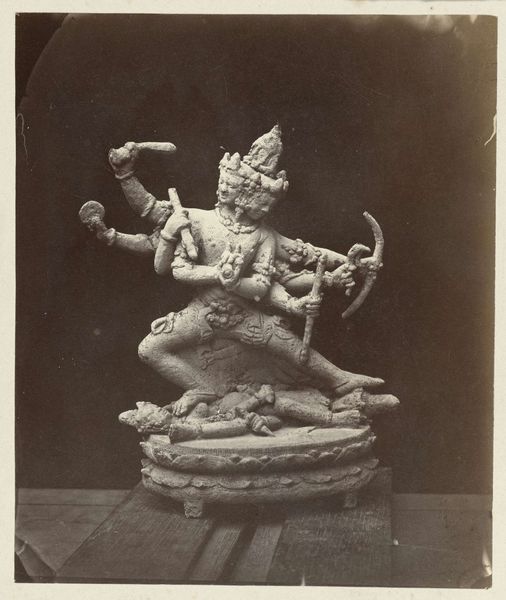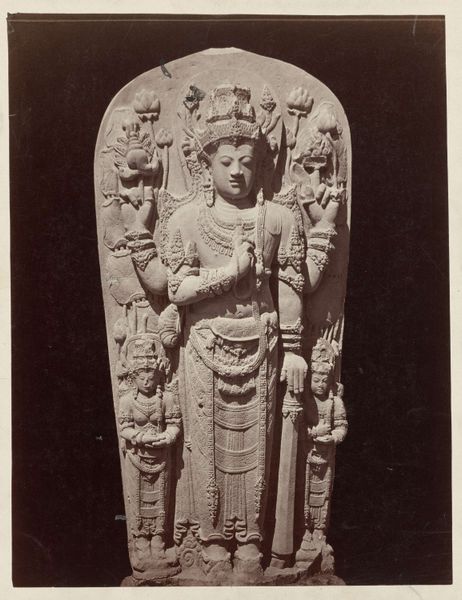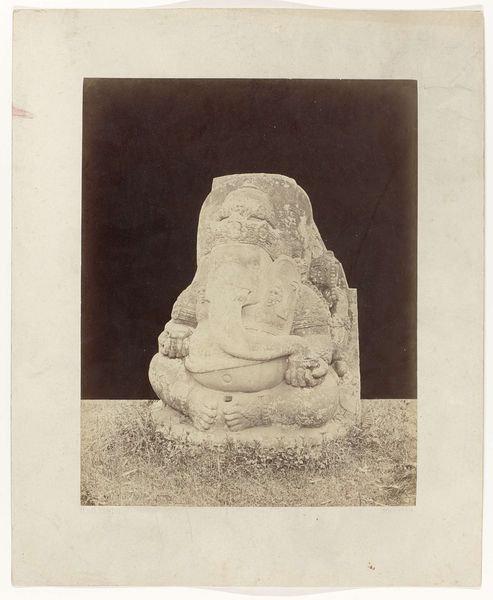
carving, sculpture
#
carving
#
sculpture
#
asian-art
#
ancient-mediterranean
#
sculpture
#
statue
Dimensions: height 340 mm, width 290 mm
Copyright: Rijks Museum: Open Domain
Curator: Looking at this fascinating carving, identified as “Rear View of Ganesha with the Face of a Monster” by Isidore Kinsbergen, and potentially dating from 1867-1868. What are your initial thoughts? Editor: My first impression is a kind of playful horror. It's intricately carved, clearly invoking religious symbolism, yet the grotesque mask and posture convey a strange ambivalence. Who are we meant to see in this divine-demonic portrait? Curator: Well, Ganesha, of course, represents wisdom and prosperity in the Hindu tradition, but monstrous faces aren’t uncommon within complex religious symbology. Consider the protective role monsters play, frightening away negative energies and asserting divine power through confronting what terrifies us. Editor: Absolutely, and I wonder about the cultural context that might be reflected in such work. A colonial gaze framing the divine through the lens of the monstrous? Does it performatively other, or challenge colonial definitions of otherness through re-claiming and resignifying it? Curator: The potential intention to reclaim and re-signify cultural identity, especially during the colonial era, is definitely worth noting. I am curious how this blend of fear and veneration, presented in a photograph, may function on the emotional subconscious of the colonizer and the colonized. Editor: And for viewers now. To what extent are we still struggling with colonial afterlives in how we read cultural artifacts? Even just using "monster" as a descriptor reinforces an outside, Western gaze. Curator: A Western interpretation undoubtedly colors the lens, yes. "Monster," perhaps more accurately representing a complex guardian or manifestation of powerful cosmic forces, also touches on enduring human preoccupations: How do we reconcile contrasting aspects of being? How does something so imposing bring wealth or wisdom? The figure holds power—destructive and creative, much like many deities across cultures. Editor: Thank you! Your reading reminds us that power doesn’t exist in one sphere; to consider its religious and historical context and challenge pre-conceived frameworks. Curator: It reveals the beauty in nuanced historical memory that resists definition.
Comments
rijksmuseum about 2 years ago
⋮
Kinsbergen often photographed both the front and back of important sculptures in a scientific manner. Here the back of Ganesha’s head is protected by the growling face of a monster or kala. The inscription on the base is a dating in words, and probably places the sculpture in the year 1161 of the Shaka Era, or the year 1239 CE.
Join the conversation
Join millions of artists and users on Artera today and experience the ultimate creative platform.
